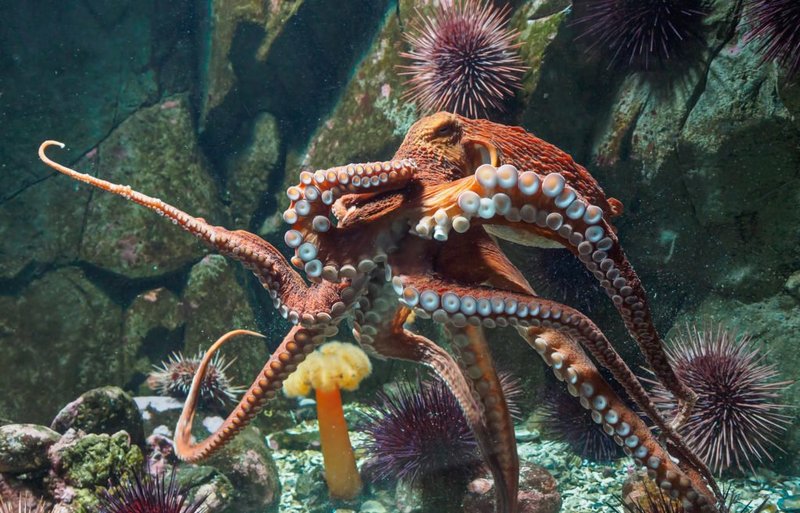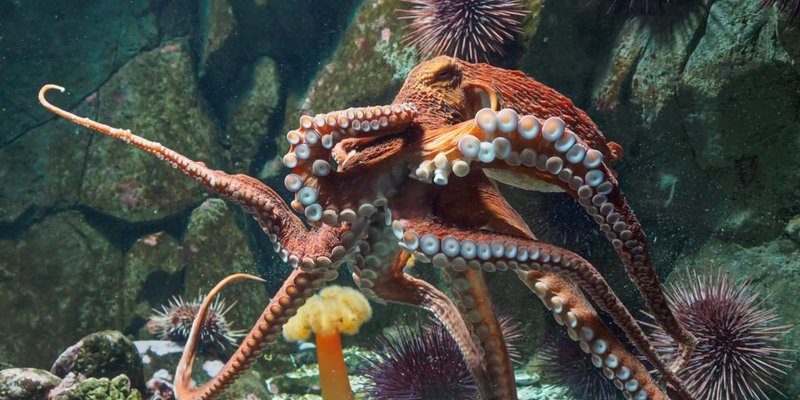
Imagine if you had to navigate a world filled with various obstacles that could put your life at risk, like pollution, climate change, and overfishing. The Giant Pacific Octopus is no different. Its survival hinges on the delicate balance of its environment and human activities that encroach on its habitat. So, what are these threats, and how can we understand them better? Let’s dive in and explore the common challenges these beautiful creatures face in the wild.
Pollution and Its Impact
Pollution is like a shadow creeping into the ocean, affecting marine life and ecosystems. For the Giant Pacific Octopus, various types of pollution play a significant role in threatening their well-being. Chemical runoff, plastic waste, and oil spills can poison their habitats. You might be wondering, “How does this happen?”
When chemicals from agriculture and industries wash into the oceans, they create toxic environments for all marine life. Heavy metals and pesticides can accumulate in the octopus’s body, affecting their health and reproduction. Additionally, plastic debris can cause entanglement or ingestion, leading to harmful complications.
The octopus often relies on its keen sense of touch and taste to explore its surroundings, but when pollution muddles the water, it becomes hard for them to navigate. The intricate world they inhabit becomes a dangerous maze filled with hazards that can impact their survival.
Climate Change and Ocean Temperature
Climate change is a massive issue that’s hard to ignore. As global temperatures rise, ocean temperatures soar along with them. This affects marine species, including the Giant Pacific Octopus, in several ways. Imagine you’re trying to live in a home that keeps getting warmer; it would be uncomfortable, right?
Warmer waters can disrupt food availability. The octopus primarily feeds on crabs, fish, and other marine organisms that may struggle to adapt to changing temperatures. With their food sources dwindling, octopuses face starvation and a decline in population.
Additionally, rising sea temperatures can affect the octopus’s breeding patterns. They thrive in cooler waters, and if the environment becomes too warm, it may lead to reduced reproduction rates. This can create a ripple effect in their populations, leading to potential extinction.
Overfishing and Bycatch
Overfishing is another pressing threat. As demand for seafood increases, fishing practices often lead to the capture of unintended species—this is known as bycatch. For the Giant Pacific Octopus, this means they could get caught in fishing nets along with their prey.
Picture being in a crowded marketplace where you’re just trying to find your favorite food, but instead, you’re caught up in a mass of people pushing and pulling. That’s what happens with octopuses caught in traps or nets intended for other fish. Once they’re trapped, they can struggle to escape, leading to stress or even death.
Overfishing not only affects the octopus directly by catching them but also indirectly by depleting their food sources. With fewer crabs and fish in the ocean, octopuses find it increasingly difficult to survive.
Habitat Destruction
Our oceans are not just open water; they’re vibrant ecosystems filled with reefs, kelp forests, and rocky outcrops. Unfortunately, human activities such as coastal development and pollution can lead to habitat destruction. Imagine tearing down a city to make room for a parking lot.
For the Giant Pacific Octopus, the loss of habitat means losing the places they call home. They rely on rocky structures and kelp forests to hide from predators and hunt for food. When these habitats are damaged or destroyed, the octopus has nowhere to go.
Moreover, coastal development can lead to increased boat traffic, which can be dangerous for these creatures. Boat collisions can injure or kill octopuses, further threatening their survival. Protecting their natural habitats is essential for their continued existence.
Invasive Species
Invasive species are like unexpected houseguests that overstay their welcome—they disrupt the balance of the ecosystem. In the ocean, non-native species can outcompete the Giant Pacific Octopus for food and habitat.
For example, the introduction of species like the lionfish can drastically change the dynamics of the food web. These invaders consume prey species that the octopuses rely on, leading to a decline in their food sources. When their competition skyrockets, octopuses may struggle to find enough to eat.
Furthermore, invasive species can sometimes introduce diseases that native octopuses have not encountered before. This lack of immunity can lead to significant health issues within the octopus population, making them more vulnerable to other threats.
Conservation Efforts
So, what can be done to protect the Giant Pacific Octopus and help ensure their future? There are several conservation efforts aimed at addressing these threats. One of the most effective methods is creating marine protected areas (MPAs). These designated spaces allow marine life to thrive without the pressures of fishing and pollution.
Additionally, supporting sustainable fishing practices can go a long way. This means advocating for responsible methods that minimize bycatch and protect delicate ecosystems. By choosing sustainably sourced seafood, we can help reduce the impact on marine life.
Community awareness is also critical. Educating others about the importance of protecting the environment can lead to positive changes in human behavior. Whether it’s organizing clean-up efforts or advocating for stronger regulations, every bit counts when it comes to protecting our oceans.
The Giant Pacific Octopus is a remarkable creature, but it faces numerous threats in the wild. From pollution and climate change to overfishing and habitat destruction, these challenges can severely affect their populations. However, by understanding these issues and taking steps toward conservation, we can help secure a better future for these amazing animals.
So, next time you think of the Giant Pacific Octopus, remember that there’s more to their story. They need our help to continue gliding gracefully through the ocean blue. By working together, we can preserve their magnificent world and ensure that future generations can appreciate these intelligent and beautiful creatures.

